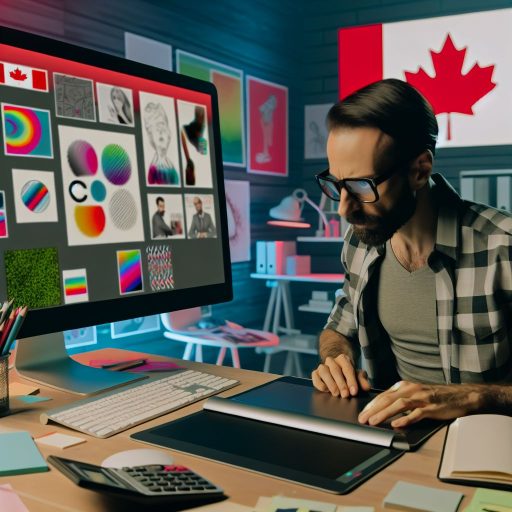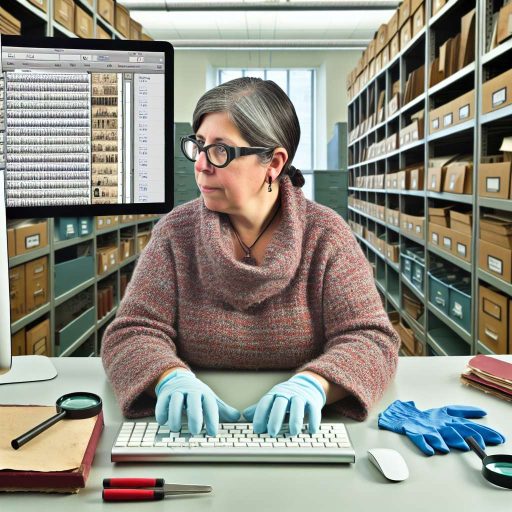Understanding the Basics of Graphic Design
Core Skills Needed
Graphic design requires a mix of technical and creative skills.
Creativity is key to producing unique visuals.
Attention to detail ensures high-quality work.
Communication skills are essential for collaborating with clients.
Time management helps meet deadlines effectively.
Essential Tools for Designers
Graphic designers use various tools to bring their ideas to life.
Adobe Creative Suite remains the industry standard.
Tools like Photoshop and Illustrator are widely popular.
Canva offers user-friendly options for beginners.
Sketch and Figma cater to UI/UX design needs.
Understanding Design Principles
Familiarity with design principles enhances a designer’s work.
Balance creates a sense of stability in design.
Contrast helps elements stand out effectively.
Hierarchy guides the viewer’s eye through the design.
Alignment contributes to the overall cohesiveness of a piece.
Different Career Paths in Graphic Design: An Overview
Exploring Graphic Design Roles
Graphic design offers a variety of career paths for creative individuals.
Each path allows designers to express their artistic vision.
Understanding the different roles can help you choose wisely.
Brand Identity Designer
A brand identity designer focuses on creating a brand’s visual elements.
This includes logos, color palettes, and typography.
They ensure brand consistency across various platforms.
Moreover, they work closely with marketing teams to align visuals with strategy.
Web Designer
Web designers create visually appealing and functional websites.
They consider user experience while designing layouts and navigation.
Additionally, knowledge of HTML and CSS is often beneficial.
Unlock Your Career Potential
Visualize a clear path to success with our tailored Career Consulting service. Personalized insights in just 1-3 days.
Get StartedThey collaborate with developers to ensure seamless functionality.
UI/UX Designer
UI/UX designers focus on users’ interactions with products.
Their goal is to enhance user satisfaction through intuitive design.
This role requires a deep understanding of user behavior and psychology.
They conduct usability tests to refine their designs.
Print Designer
Print designers specialize in materials such as brochures and business cards.
They focus on layout, typography, and color theory.
Moreover, they ensure designs are ready for printing processes.
Creativity plays a crucial role in this field.
Motion Graphics Designer
Motion graphics designers create animated visuals.
They often work on videos, advertisements, and digital presentations.
This role blends creativity with technical skills in animation software.
Additionally, they stay updated on the latest design trends.
Freelance Graphic Designer
Freelance graphic designers enjoy the freedom of self-employment.
They work on diverse projects for various clients.
This path allows for greater flexibility in work hours and styles.
Furthermore, building a strong portfolio is essential for success.
Art Director
Art directors lead creative projects and teams.
They oversee the visual aspects of campaigns and publications.
This senior role requires strong leadership and communication skills.
Art directors often collaborate with clients to fulfill their vision.
Career Path Considerations
Exploring these graphic design career paths can be rewarding.
Consider your strengths and interests when choosing a direction.
Total engagement and passion will lead to a fulfilling career.
Freelancing vs. Agency Work: Pros and Cons for Graphic Designers
Freelancing Overview
Freelancing offers flexibility in your work schedule.
You can choose your projects based on personal interest.
This independence allows for creative freedom.
Freelancers typically set their own rates.
However, it requires self-discipline and time management.
Pros of Freelancing
- Control over work-life balance.
- Variety of projects to choose from.
- Opportunity to build personal brand and network.
- Potentially higher earnings for skilled designers.
Cons of Freelancing
- Inconsistent income may create financial stress.
- Less access to employee benefits.
- Finding clients can be challenging.
- Isolation from other creative professionals.
Agency Work Overview
Agency work provides a structured environment.
You usually work with a team of other designers.
Collaboration can lead to innovative ideas.
Agencies often provide benefits like health insurance.
This setting may offer more job security compared to freelancing.
Pros of Agency Work
- Stable salary and regular benefits.
- Access to resources and tools.
- Opportunities for professional growth and development.
- Networking with clients and industry professionals.
Cons of Agency Work
- Less control over projects and schedule.
- Creative vision may be limited by client demands.
- Potential for office politics and competition.
- Pressure of meeting project deadlines.
Making the Choice
Your decision should reflect personal goals and preferences.
Consider what environment fosters your creativity.
Think about your financial needs and lifestyle.
Explore both paths carefully before committing.
Learn More: Common Challenges for Graphic Designers and Solutions
The Importance of Portfolio Development for Aspiring Graphic Designers
Initiating Your Portfolio
Creating a portfolio is a fundamental step for all graphic designers.
Your portfolio showcases your skills and creativity to potential employers.
Furthermore, it serves as a visual resume in the design industry.
Choosing Projects Wisely
Select projects that reflect your best work.
You should include a variety of styles and techniques.
This diversity will attract a broader range of clients or employers.
Moreover, make sure to display both personal and professional projects.
Presenting Your Work Effectively
Presentation plays a crucial role in portfolio development.
Each project description should highlight your thought process.
Additionally, explain the context and the challenges you faced.
Using high-quality images will enhance the visual appeal of your work.
Regular Updates and Revisions
Your portfolio should evolve as your skills grow.
Regular updates will keep your portfolio relevant and fresh.
Moreover, remove older pieces that no longer represent your style.
This practice will demonstrate your commitment to continuous improvement.
Seeking Feedback
Feedback is essential to refining your portfolio.
Share your work with peers and mentors for constructive criticism.
Incorporating their suggestions can lead to significant improvements.
Additionally, consider seeking feedback from industry professionals.
Utilizing Online Platforms
Online platforms can extend your portfolio’s reach beyond local opportunities.
Creating a website allows potential clients to view your work easily.
Platforms like Behance and Dribbble also provide exposure to a larger audience.
Moreover, these platforms enable networking with other design professionals.
Discover More: How to Stay Inspired as a Canadian Content Creator
Emerging Trends in Graphic Design: Staying Relevant in a Changing Industry
Adapting to Digital Advancements
Graphic designers must embrace digital tools to enhance their creativity.
Software like Adobe Creative Cloud leads the pack in industry standards.
Moreover, various online platforms offer innovative design resources.
By staying updated, designers can engage effectively with clients.
Utilizing Artificial Intelligence
Artificial intelligence is transforming graphic design workflows.
AI tools can automate mundane tasks, freeing up creative time.
For instance, companies like Canva offer AI-driven design suggestions.
These technologies enable designers to focus more on concept development.
Fostering Sustainability
Sustainability is becoming a core focus in graphic design practices.
Designers are incorporating eco-friendly materials and processes.
This trend not only attracts environmentally conscious clients but also reduces waste.
Therefore, innovative approaches are essential for future-ready design strategies.
Emphasizing User Experience
User experience (UX) design remains pivotal in graphic design.
Effective designs should prioritize usability and accessibility.
Collaboration with UX specialists can lead to more user-centered results.
This approach ensures that visual aesthetics align with functional goals.
Exploring Motion Graphics
Motion graphics continue to gain popularity across various media platforms.
From social media to advertising, animated visuals capture attention.
Learning motion design can set a designer apart in a competitive market.
Tools like After Effects enable designers to create engaging animations.
Pursuing Continuous Learning
In this rapidly changing industry, continuous learning is crucial.
Attending workshops and webinars enhances skill sets and knowledge.
Networking with other professionals helps in sharing insights and trends.
Ultimately, a commitment to learning leads to greater career advancement.
Gain More Insights: Challenges and Rewards of Being an Archivist in Canada

Networking Strategies for Graphic Designers: Building Professional Relationships
Importance of Networking
Networking plays a crucial role in a graphic designer’s career.
It opens doors to new opportunities and collaborations.
Connecting with others can provide valuable industry insights.
Moreover, networking helps in staying updated with design trends.
Developing Your Personal Brand
Establishing a strong personal brand is essential for networking.
Begin by creating a professional portfolio showcasing your work.
Maintain a consistent online presence across platforms.
Utilize social media to share your designs and interact with others.
Attending Industry Events
Participating in industry events is a fantastic networking strategy.
Look for design conferences and workshops in your area.
Attend local meetups to connect with like-minded individuals.
Engage in conversations to share ideas and learn from others.
Utilizing Online Platforms
Online platforms can expand your networking reach.
Join design-related groups on social media platforms.
Engage with other designers on forums and discussion boards.
Platforms like LinkedIn are great for professional connections.
Building Relationships with Mentors
Finding a mentor can significantly enhance your career growth.
Look for experienced designers willing to share their knowledge.
Approach them with specific questions or topics for discussion.
Maintain ongoing communication to build a strong relationship.
Collaborating with Others
Collaborative projects can expand your network naturally.
Reach out to photographers, writers, or other designers.
Work on joint projects to combine skills and perspectives.
These collaborations can lead to lasting professional connections.
Following Up and Staying Connected
Follow-up is key after meeting new contacts.
Send a friendly message to remind them of your conversation.
Share relevant articles or resources with them.
Consistent communication can strengthen your professional relationships.
Find Out More: The Path to Becoming a Certified Archivist in Canada
Educational Pathways: Degree Options and Certifications in Graphic Design
Understanding Degree Options
Graphic design offers various degree pathways for aspiring creatives.
Students can pursue an associate’s degree to gain foundational skills.
A bachelor’s degree provides more advanced knowledge and expertise.
Master’s programs enhance artistic and technical abilities further.
Institutions like the Rhode Island School of Design offer reputable programs.
Importance of Certifications
Certifications can enhance your graphic design credentials effectively.
Programs like Adobe Certified Expert focus on industry-standard software.
These certifications demonstrate your expertise to potential employers.
Also, specialized certifications improve your job market competitiveness.
Online Learning Opportunities
Online courses are becoming increasingly popular in graphic design education.
Platforms like Coursera and Udemy offer flexible learning options.
These courses accommodate varying expertise levels, from beginners to advanced.
Additionally, they allow students to learn at their own pace.
Connecting With Professionals
Networking plays a vital role in advancing a graphic design career.
Students should engage in internships while pursuing their degrees.
Internships provide practical experience and valuable industry connections.
Conferences and workshops also offer opportunities to meet seasoned professionals.
Building a Portfolio
A strong portfolio showcases your skills and creativity to prospective employers.
Graphic design students should start building their portfolios early on.
Include diverse projects that demonstrate your range and versatility.
Regularly update your portfolio as you complete new and exciting work.
The Role of Technology in Graphic Design
Introduction to Graphic Design Technology
Technology has transformed graphic design drastically in recent years.
Designers now leverage various tools to enhance their creativity.
This innovation facilitates faster and more efficient workflows.
Essential Software for Graphic Designers
Adobe Creative Suite remains the industry standard for design professionals.
Software such as Photoshop and Illustrator provide extensive features.
Additionally, applications like InDesign are crucial for layout design.
Other popular tools include CorelDRAW and Affinity Designer.
Evolving Trends in Graphic Design Tools
The rise of web-based design tools is notable in the industry.
Canva and Figma allow for collaborative projects in real-time.
These platforms democratize design, making it accessible to all.
Moreover, virtual reality (VR) and augmented reality (AR) are emerging trends.
Innovations Shaping the Future
Artificial intelligence (AI) is changing how designers generate content.
AI tools can assist in color selection and layout suggestions.
This technology streamlines repetitive tasks, enhancing productivity.
Furthermore, data analytics helps tailor designs to target audiences.
The Importance of Staying Current
Continuing education is vital in keeping up with technological advances.
Designers should attend workshops and online courses regularly.
Networking with other professionals also fosters knowledge sharing.
Ultimately, staying informed makes designers more competitive.
Additional Resources
What job do you have with your degree in art history : r/ArtHistory




